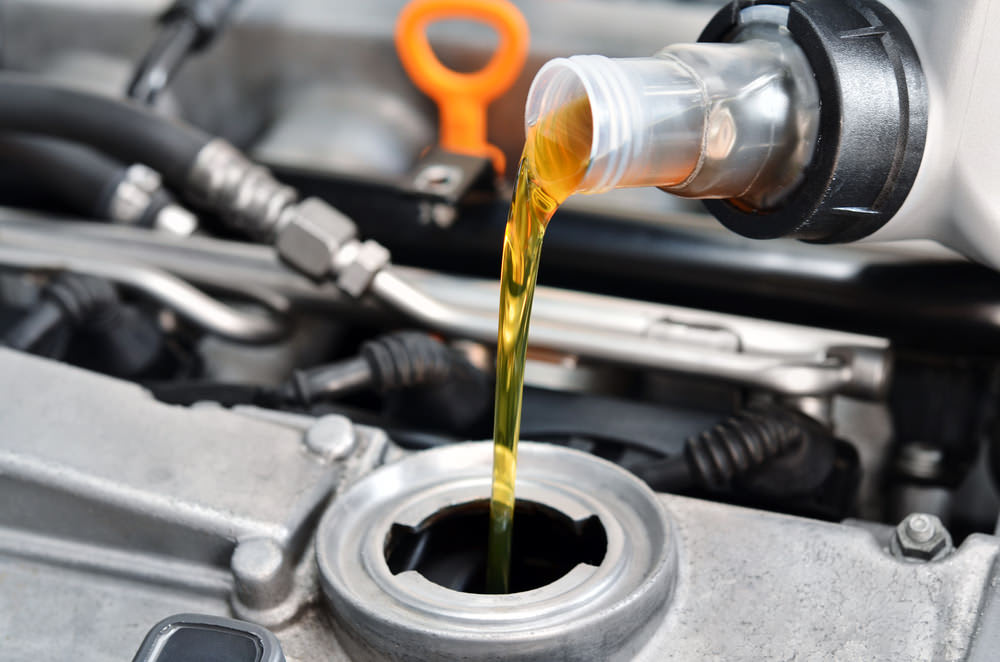

Motor oil is an essential fluid in your engine that keeps it running smoothly and efficiently while extending the life of your vehicle. Whether you use a full synthetic oil or conventional motor oil, changing the oil and filter before it loses its viscosity can mean the difference between blowing up your motor or it running for hundreds of thousands of miles. Since so many types of motor oil are available, you want to make sure you choose the right one when you're changing oil to protect your vehicle.
Understanding What Motor Oil Does
Motor oil moves through the engine system and its components to lubricate them and pick up contaminants that can harm the engine. The oil gets dirty and less viscous over time, and the oil filter becomes clogged with the contaminants and debris. Both of these components need to be changed periodically, according to the manufacturer’s instructions, usually in the 3,000 to 5,000 mile range.
The engine oil must be viscous enough to flow through the system and return to the oil pan where it sits when the engine is turned off. Oil is measured by its viscosity, or how thick or thin the oil is. An example of a difference in viscosity is comparing honey and vinegar. Honey is thick and flows very slowly when poured. Vinegar is thin and flows quickly when it is poured. Depending on your engine, a thick or thin oil may be necessary.
Oil must also be able to function in various temperatures. It must be able to flow in the cold of winter, while also maintaining the correct thickness in the heat of summer, all while going through temperature changes during normal engine operation.
Determining Viscosity
The Society of American Engineers (SAE) has developed a grading system that determines the viscosity of oil. This system is ordered by a set of numbers: 0, 5, 10, 15, 20, 25, 30, 40, 50 and 60. They let you know how thick the oil is, and what temperature it is best suited for. When the letter W is placed after the numbers, it refers to winter, and means the winter viscosity for the oil.
In the past, people used one grade of oil for fall and winter, and another for spring and summer, because the same oil wouldn’t work for both extremes in temperature. However, variations in temperature occur continuously because the engine starts cold and heats up as it runs. Today, manufacturers have created multi-grade oils that can be used year-round. This eliminates the need for switching out the oil for the change in temperature and ensures proper protection from a cold start to a hot engine.
With multi-grade oils, two numbers are listed. The one indicates the viscosity for cold temperatures (indicated as W for winter) and the other indicates the viscosity for warm temperatures. A frequently-seen example is 5W-30.
How Viscosity is Measured
The oil is placed into a viscometer and measured for how fast or how slow the oil flows. It is tested at 212 degrees Fahrenheit, which is considered the average temperature of a running engine. An oil with a grade of SAE 30 has a viscosity measurement of 30 at 212 degrees Fahrenheit.
Multi-grade oil is designed to perform at high and low temperatures, which means that the flow starts at a colder temperature when the engine first starts, and continues to flow at that viscosity as it warms up. The benefit for the vehicle is that it has less dry (unlubricated) operation and reduced wear.
The faster the oil flows through the viscometer for testing, the lower the number. When the oil is thicker, it will flow slower and be given a higher number. What many people don’t realize is that a 5W-30 and 10W-30 run exactly the same in a warm engine. The difference between the two is how quickly they run when the engine is cold and first started.
Using Additives
Multi-grade oils often have viscosity index improving additives to keep the oil from getting too thin when the engine heats up. At the same time, they thin it down enough for it to protect almost instantly from startup. Having these additives reduces engine wear and improves performance. However, there is a downside: Over time, the additives are depleted, which leaves the oil too thin to protect your engine. This is one reason changing your oil on a schedule is so important.
Synthetic oils generally don’t contain additives and can maintain the right viscosity in various temperatures. However, they are not designed for use in all vehicles. You must check your owner’s manual to find out what type of motor oil is recommended for your vehicle. If you use anything other than what the manufacturer recommends, you risk voiding the warranty and damaging your engine. YourMechanic recommends Mobil 1 advanced full synthetic motor oil to protect your engine and reduce engine deposit formation.
If the oil is too thick when the engine is turned on and cold, it won’t be able to flow and protect components. If the oil thins down too much when the engine is running hot, it won’t lubricate the components adequately. Ensure that the viscosity of the oil is correct by having a professional technician from YourMechanic complete oil and filter replacements using top-quality Mobil 1 oil to help reduce wear and tear on your engine while optimizing its efficiency and performance.



